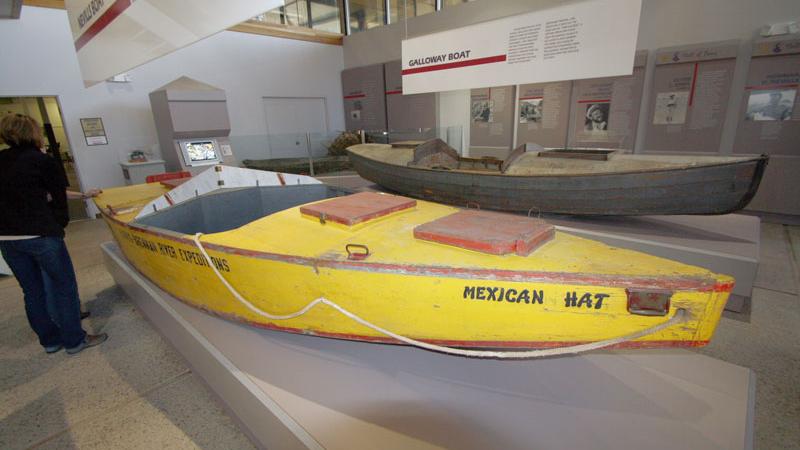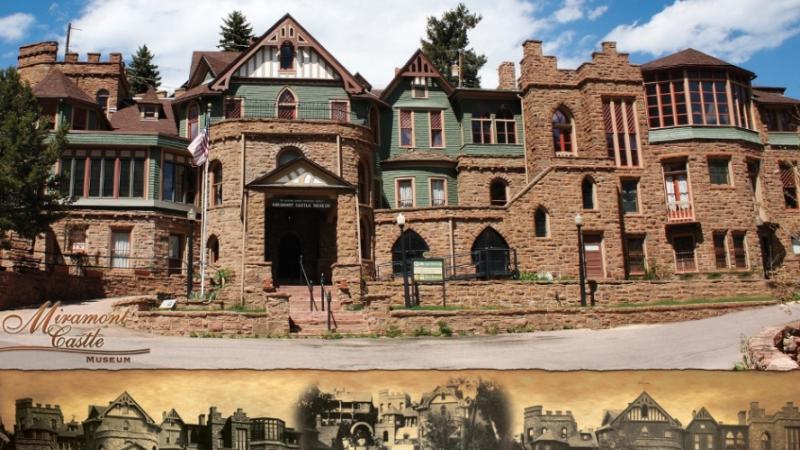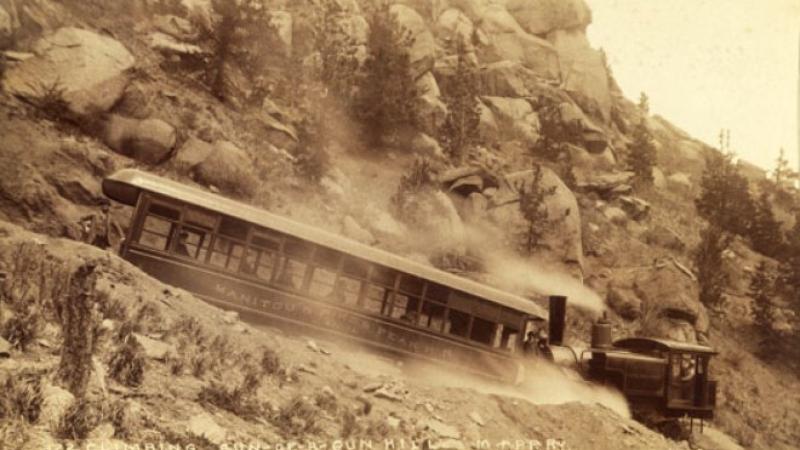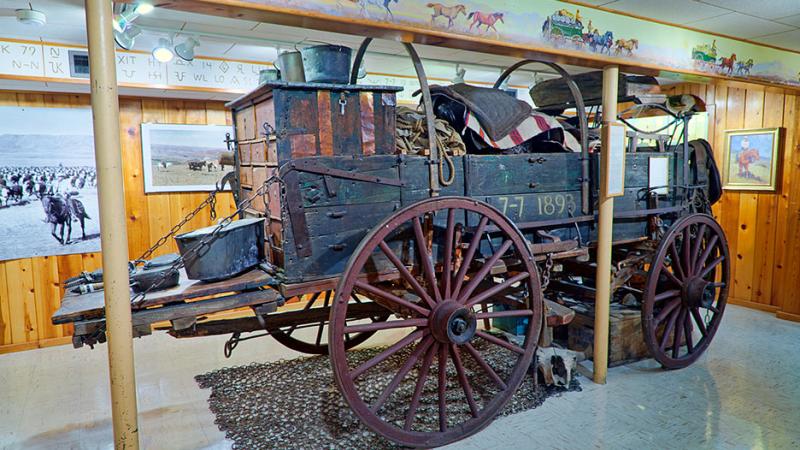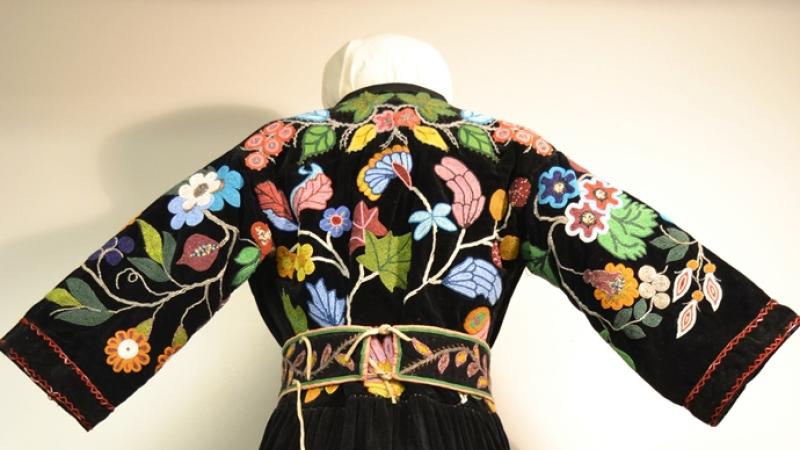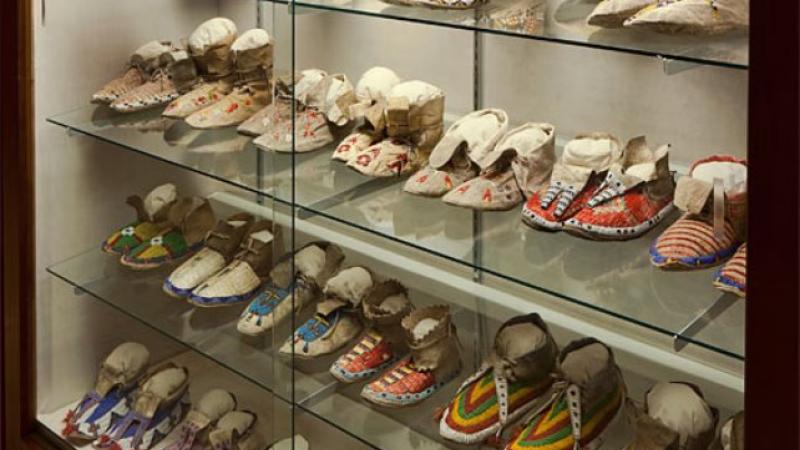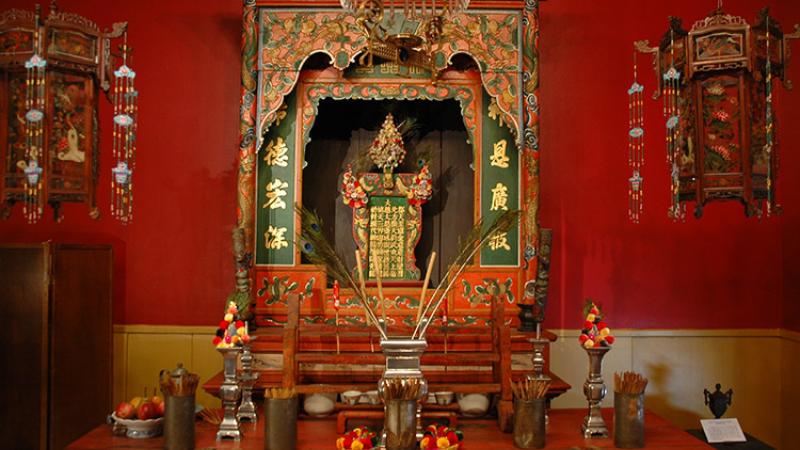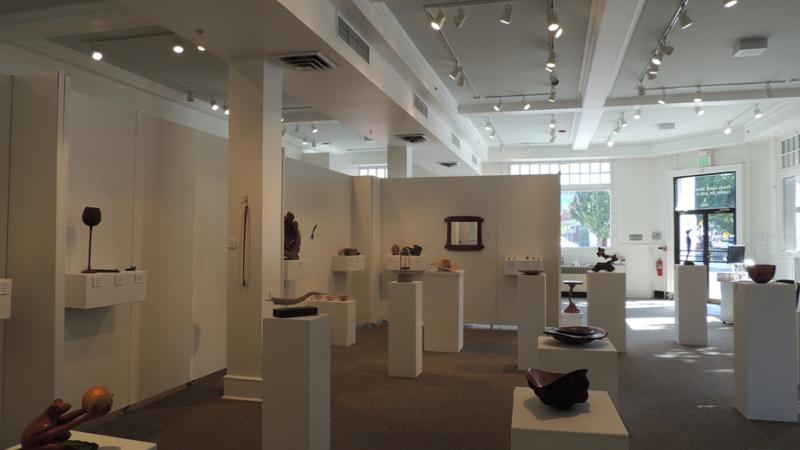Summer Road Trip! Next Stop: The American West
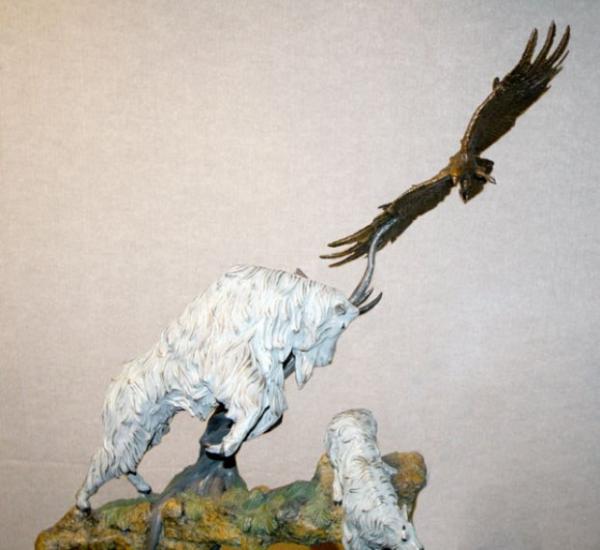
The Art Gallery at the John Wesley Powell River History Museum houses many paintings and bronze sculptures of subjects like the Fremont Indians carving petroglyphs, moose and buffalo in their natural habitats, and cowboys getting bucked off horses. Green River artists, Jo Baxter and Joseph Venus, are represented in the gallery.
Courtesy of the John Wesley Powell River History Museum

The Art Gallery at the John Wesley Powell River History Museum houses many paintings and bronze sculptures of subjects like the Fremont Indians carving petroglyphs, moose and buffalo in their natural habitats, and cowboys getting bucked off horses. Green River artists, Jo Baxter and Joseph Venus, are represented in the gallery.
Courtesy of the John Wesley Powell River History Museum
We continue our series with a historical and cultural tour of the American West.
The West has long held a captivating, if fraught, place in the imaginations of Americans and people around the world. With ever-shifting boundaries, confluences and clashes of cultures, and myriad natural phenomena to explore, the West is defined by variety and change. To enable richer understandings of these many heritages and histories, NEH supports historical and cultural organizations that preserve and showcase the artifacts of the West, from Native American settlement to the present. Indigenous peoples, explorers, settlers, immigrants, prospectors, railroad workers, tourists, and health seekers are just some of the groups represented at these cultural sites. If you are interested in treacherous river exploration, diverse Native American ways of life, miners and the gold rush, travelers from the East to tuberculosis sanitariums, or the lawless “wild west,” join us this summer on a road trip to some of the many cultural heritage institutions dedicated to the history of the West!
John Wesley Powell River History Museum (Green River, UTAH)
Our road trip begins with John Wesley Powell, an Army Major, naturalist, anthropologist, and one of the best-known explorers of the West. Powell is famous particularly for his 1869 journey down the Green and Colorado Rivers—which included the first passage by a non-native through the Grand Canyon. During that and subsequent trips, Powell’s group traversed 1,000 miles of uncharted territory, recorded many natural phenomena, photographed countless vistas, encountered Native Americans (for whom Powell had great respect and curiosity, having spent time among the White River Ute), and lost several men. The journey remains a pivotal event in American explorations of and ideas regarding the West. The John Wesley Powell River History Museum, located on the banks of the Green River in Utah, attempts to recreate this journey, and to illuminate both the surrounding area and the life of John Wesley Powell. In addition to exhibitions about Powell, the museum boasts a room where visitors can examine boats that made the journey down these treacherous rivers. Exhibits focused on natural history, geology, and conservation feature photographs and artifacts, and an art gallery dedicated to regional themes features works by local artists. In 2006, the museum received a NEH grant to support training of its staff in preservation practices and the purchase of supplies to improve storage and handling of the museum’s archives.
Miramont Castle Museum, Manitou Springs Historical Society (Manitou Springs, COLORADO)
Our journey continues in Colorado. Nestled at the foot of Pike’s Peak, the town of Manitou Springs is well known today for its mineral springs and clean air. Apache, Ute, and Anasazi tribes held the area to be sacred and drank from the springs’ water; later, European settlers marveled at the natural setting, traveling to Manitou for the health benefits of the springs and dry air. One popular attraction is the Miramont Castle Museum, a 14,000 square-foot castle constructed by a French missionary priest and later used as a sanitarium, primarily for the treatment of tuberculosis. Today, the museum showcases both the elaborate architecture and artifacts of the Victorian Era, and the role of Colorado and the West in health treatments during the 19th century. Visitors to the museum may examine Victorian architecture and furnishings, experience authentic recreations of the culinary tastes of the 1890s in the Queen’s Parlour Tea Room, and learn about the medical history of the sanitarium, where they can view a preserved tuberculosis hut built by the Sisters of Mercy in the early 20th century. In 2012, the Manitou Springs Historical Society received a NEH grant to support a storage move and the training of staff in the use of environmental monitoring equipment, to help ensure appropriate conditions for maintaining Miramont Castle’s humanities collections, which include ceramic and glass artifacts, furniture, paintings, textiles, photographs, scrapbooks, newspapers, and postcards.
Wyoming Frontier Prison (Rawlins, WYOMING)
Travelers with a taste for the macabre and an interest in the Old West might head north over the Wyoming border to visit the Wyoming Frontier Prison, a “remnant of the grizzly past of the old west.” Visitors to the prison will learn about a woman who committed murder with a pie, a “gentleman bandit,” conflicts between cattlemen and sheep growers that ended in murder, and a harrowing escape from the prison’s infirmary. This is Wyoming’s first state penitentiary; built in 1888 and opened in 1901, the prison was part of the government’s late 19th- and early 20th-century efforts to combat the perception of Wyoming as a haven for gangs of outlaws. The museum includes thirteen historic structures, including an Administration Building, Cell Block, Infirmary/Death House, Dining Room, Guards’ Quarters, Watertower, Pumphouse, and Laundry Room. Exhibits provide a glimpse into the lives of those involved in the prison, telling their stories through first-person accounts of prisoners, wardens’ diaries, prisoner art, photographs, and letters to and from famous and not-so-famous inmates. Cinephiles may be interested to learn that the movie “Prison,” starring Viggo Mortensen, was filmed at the Wyoming Frontier Prison in 1987. A 2011 NEH grant supported the purchase of archival supplies and staff training at the museum.
Yellowstone County Museum (Billings, MONTANA)
The West was home to numerous native tribes before the arrival of European settlers. One place to learn more about Native American cultures, as well as the ranchers and others who later populated the West, is over the border in Billings, Montana, at the Yellowstone County Museum. Located in a log cabin first used by a cattle rancher in the 1890s, the museum explores the rich history of the Yellowstone River basin, including materials from both Native American cultures and European settlers through the 1950s. Exhibits feature the history of Indian tribes in the Northern Plains, westward expansion of miners, cattle ranchers and sheep herders, the railroads and military industries, and household activities. Don’t miss the authentic “roundup wagon” (chuck wagon), used from the 1890s through the 1930s and now preserved for visitors to explore in the museum’s basement! A 2006 NEH grant funded consultation and training for the museum staff’s to help ensure the preservation of its important holdings of artifacts, photographs, and archival records documenting the history of southern Montana.
Lewis-Clark State College Center for Arts & History (Lewiston, IDAHO)
Heading west into Idaho, visitors may encounter another aspect of Western history at the Lewis-Clark State College Center for Arts & History. Situated at the nexus of two large rivers, Lewiston is Idaho’s only seaport city and boasted a robust mining industry and immigrant population. Chinese miners first entered the region following the discovery of gold in 1860. The Chinese miners continued to practice their form of Taoism, building several temples in the Lewiston region. Since the 1950s, the Beuk Aie Temple Society has sought to preserve the history of these religious practices, even as Lewiston’s Chinese population has dropped precipitously. Exhibits display many artifacts that have survived from these now vanished temples, including a hand-carved and hand-painted altar, deity plaques, hand-painted signs, lanterns, and ritual objects—prayers, incense holders, and ribbons. In addition, visitors can catch the recent addition of an exhibition on the Hip Sing Tong, a secret fraternal organization founded by Chinese migrants to Lewiston. In 2012, NEH funded the purchase of preservation equipment and supplies, as well as training for the Center’s staff on appropriate ways to preserve its collection of ceramics, wood, textiles, household utensils, writing implements, prayer books, and funerary objects associated with the Beuk Aie Temple. An earlier NEH grant enabled a preservation assessment of these collections. Four years after being displaced by a fire, the Beuk Aie Temple exhibit was reopened to the public in May 2013.
